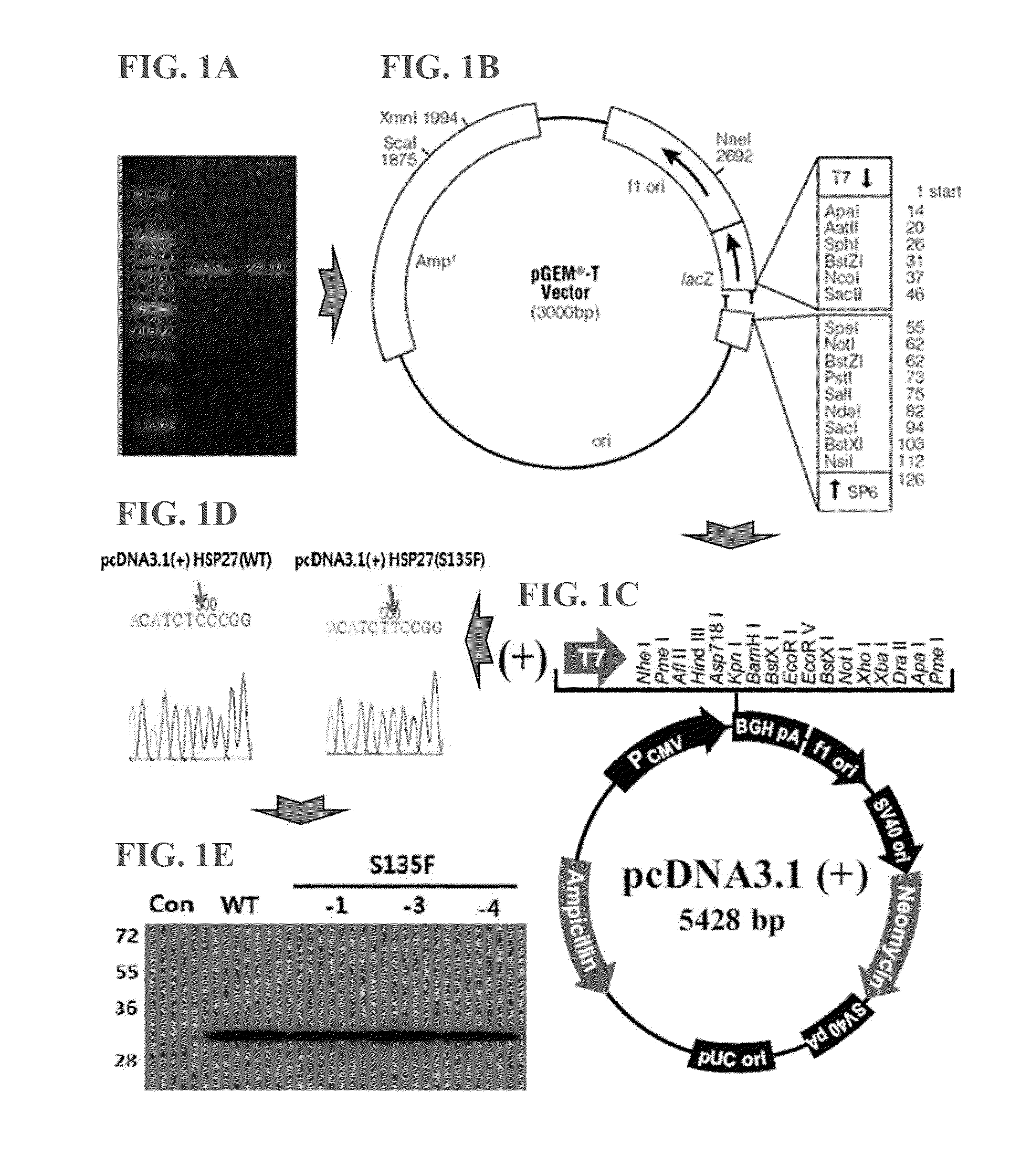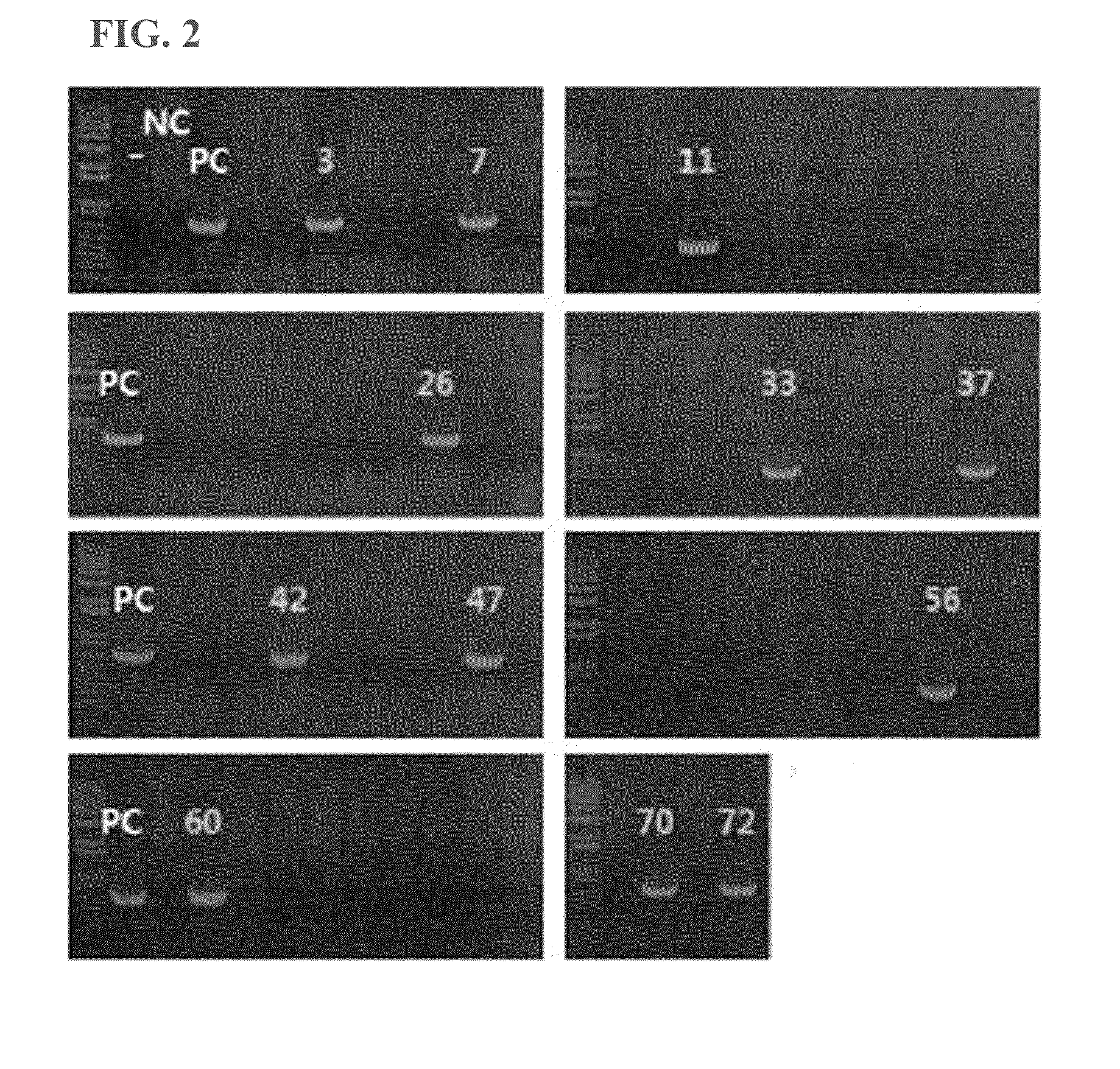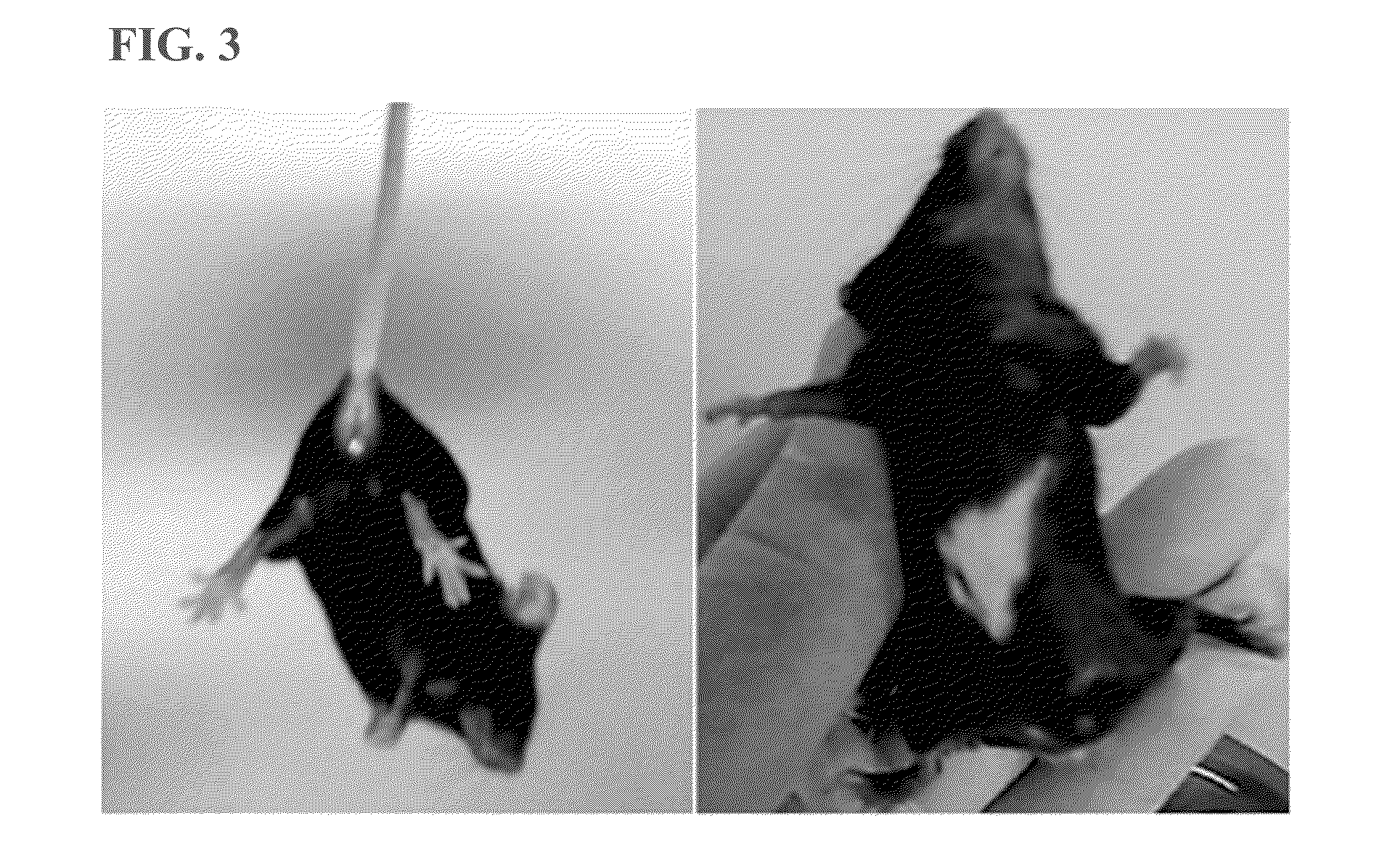Animal model of charcot-marie-tooth disease as hsp27 mutant (S135F) carrier
a charcot-marie-tooth disease and animal model technology, applied in the field of hsp27 mutation (s135f) mediated charcot-marie-tooth disease animal model, can solve the problems of unavoidable experiment using an animal model and small number of animal models that can copy such human diseases, and achieve the effect of efficient us
- Summary
- Abstract
- Description
- Claims
- Application Information
AI Technical Summary
Benefits of technology
Problems solved by technology
Method used
Image
Examples
example 1
Construction of HSP27 (S135F) Expression Vector
Construction of the Expression Vector Expressing the S135F Mutant Form of HSP27 Protein
[0063]The expression vector expressing the mutant HSP27 protein that could cause Charcot-Marie-Tooth disease was constructed.
[0064]Particularly, mRNA was extracted from the fibroblasts obtained from CMT patient by using RNeasy minikit (QIAGEN, Germany) according to the manufacturer's instruction, from which cDNA was synthesized by using Superscript reverse transcriptase kit (Invitrogen, USA). PCR was performed with the synthesized cDNA as a template by using the below primers (94° C. for 30 seconds, 60° C. for 30 seconds, 72° C. for 30 seconds, 35 cycles) (FIG. 1A). The PCR product was cloned in pGEM-T Easy vector (Promega, USA) (FIG. 1B).
Forward (SEQ ID NO: 2): 5′-atgaccgagcgccgcgtccccttct-3′,andReverse (SEQ ID NO: 3): 5′-ttacttggcggcagtctcatcgg-3′.
[0065]The sequence of the S135F mutant form of HSP27 gene was confirmed, followed by cloning in pcDNA3...
example 2
Construction of Mouse Model
[0070]The mouse model was constructed by using the pcDNA3.1(+) HSP27 expression vector expressing HSP27(A135F) prepared by the method of Example 1 and C57BL / 6NCrliOri mouse (OrientBio, Korea).
[0071]Particularly, in order to prepare a zygote, a female mouse was injected with PMSG and hCG hormone at 48 hours intervals to induce super-ovulation, followed by mating with a male mouse. Next day morning, vaginal plug was checked to confirm the success of mating. The zygote was obtained from the female mouse oviduct which was confirmed to have vaginal plug. The expression vector expressing HSP27(S135F) was injected through zona pellucida and cytoplasm into the zygote by using a micro pipette under microscope. Among the zygotes injected with DNA, those who survived were selected and transplanted in the oviduct of a surrogate mother. 19 days after the transplantation, total 72 mice were obtained from normal delivery. PCR was performed (94° C. for 30 seconds, 60° C. ...
experimental example 1
Confirmation of CMT Phenotype by Behavioral Evaluation of the Mouse Expressing HSP27
Measurement of Lower Limb Strength of Mouse Via Rotarod Test
[0073]To confirm whether or not the mouse prepared in Example 2 had the phenotype of Charcot-Marie-Tooth disease, rotarod test, the behavioral assessment test, was performed (FIG. 4).
[0074]Particularly, the mouse was located on rotarod that is moving at the speed of 2 m / s. The time for the mouse to sustain itself on the rotarod was measured. Before the test, the mouse was allowed to practice three times for a week for adaptation. On the day of recording, 1 minute-practice was allowed before the test. The endurance time was measured once a week. The time recording was continued up to 7 minutes. The time less than 7 minutes was recorded as it was, and if the endurance time was less than 3 minutes, total 3 attempts were allowed and the best record was recorded.
[0075]As a result, as shown in FIG. 5, total twelve first generation mice were selec...
PUM
| Property | Measurement | Unit |
|---|---|---|
| molecular weight | aaaaa | aaaaa |
| molecular weight | aaaaa | aaaaa |
| molecular weight | aaaaa | aaaaa |
Abstract
Description
Claims
Application Information
 Login to View More
Login to View More - R&D
- Intellectual Property
- Life Sciences
- Materials
- Tech Scout
- Unparalleled Data Quality
- Higher Quality Content
- 60% Fewer Hallucinations
Browse by: Latest US Patents, China's latest patents, Technical Efficacy Thesaurus, Application Domain, Technology Topic, Popular Technical Reports.
© 2025 PatSnap. All rights reserved.Legal|Privacy policy|Modern Slavery Act Transparency Statement|Sitemap|About US| Contact US: help@patsnap.com



